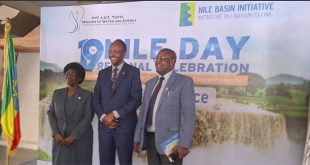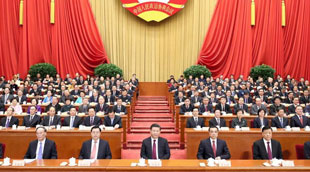
By Mubatsi Asinja Habati & Bob Roberts Katende
Claims of marginalisation and dispossession of the indigenous communities have intensified in Bunyoro over the last couple of weeks. As a panacea to the problem of domination of Banyoro indigenes by migrant Bakiga (Bafuruki), President Museveni prescribed what he thought would be the best solution to the paradox: ring-fencing certain political positions for the indigenes.
This strategy, communicated in a letter of July 15 to Minister for the Presidency Beatrice Wabudeya, has since wrought many twists to the problem.
There have been ripple effects in other parts of the country over what should also be done to migrants holding political positions as those held by non-Banyoro in Bunyoro. The Banyoro had petitioned Museveni that migrants were taking over political leadership of Bunyoro and therefore, to them, this amounted to colonisation of the natives. Museveni succumbed to their demands and wrote the controversial letter.

The question of migrants in Uganda is prevalent in every region. But nowhere else has it been as contentious as in Bunyoro. But even in Bunyoro the controversy has just sprouted in the recent past. It had not been there before. Some observers say there is more to the issue than mere ethnic hatred against the migrants in Bunyoro. What unique cause is precipitating the Bafuruki hatred in Bunyoro but cannot cause similar friction in other parts of Uganda which too have migrant settlers?
For example, out of the 6,352,249 people living in Buganda as per the 2002 population census results, only 3,974,134 people (60.5%) are indigenous Baganda, the rest of 2,378,115 are migrants from other parts of the country representing 39.5% (see Table 1).
The Baganda have been living harmoniously with the migrants regardless of their ethnic origins except in cases where there have been land disputes. But even then, they have been individual cases not based on ethnicity. Many Bafuruki in Buganda also hold elective positions from local councils up to parliament, but nobody has ever called for “ring-fencing†such positions for the native Baganda.
Observers say that until recently, both the Bafuruki and the natives in Bunyoro have been living harmoniously. This abrupt rise of Bunyoro nationalism has led to conspiracy theories in an attempt to explain the genesis of the problem. Some analysts say that Bunyoro is trying to counter the rising Buganda nationalism with her own version and stand out as a distinct and influential tribe. But they seem to be doing it differently from Buganda. Whereas Buganda is raising the stakes by demanding a federal system of governance from the central government, it’s not advocating it for only the native Baganda. It’s for all the people living in Buganda be they natives or migrants. Therefore Buganda’s nationalism is based on region while that of Bunyoro is riding on ethnicity to alienate the migrant tribes. Â

However another theory is that the tension has been sparked by the discovery of oil in Bunyoro. The expected high proceeds from the oil have motivated the Banyoro to place themselves in a forward position in order to be the principal beneficiaries. That’s why, analysts say, they are seeking to relegate the migrants, whom they believe have no legitimate natural claim to the oil, to the periphery of political leadership where the Bafuruki cannot take part in negotiations about the sharing of oil proceeds between the government and the local communities.
With the discovery of oil, according to observers, the Banyoro are suspicious that the Bafuruki might benefit more.
Whatever the reasons, the heat between the Banyoro and Bakiga seems to have started in 2002 when Fred Ruremera was elected Kibaale district LC-V chairman and President Museveni ordered him to surrender the seat to an indigenous Munyoro because he (Ruremera) is a Mukiga.
However Makerere University history lecturer Mwambutsya Ndebesa has a contrary view. He says what is happening in Bunyoro is not unique because ethnic tensions exist in various parts of the country. He cites Tororo where Japadhola and Itesot are claiming marginalisation, in Buganda between Baganda and Banyala or Baruuli over alleged domination by Baganda. “The difference is of form but not substance,†Ndebesa says. “The tensions in Bunyoro are just a microcosm of a macrocosm. They are a small scale of a potential big scale that is brewing in this country.â€

However in Buganda, the largest kingdom with the most populous tribe- Baganda- there are areas which have virtually become exclusive enclaves for migrants who also hold powerful political positions and yet this has not strained any relations between the natives and the settlers. Of the 13 districts of Buganda region, some districts like Sembabule and Lyantonde have virtually been taken over by Bafuruki (non-Baganda).
Over 55 ethnic groups live in Buganda, with the biggest being Banyankore with 459,877 people which translates into 7.2%. (See Table 1 for details).
Since 2002, due to urban amenities like hospitals and other rural-to-urban magnets, the number of migrants in Buganda has probably increased and possibly brought down the percentage of the indigenes.
Kampala, being the capital city, has the highest number of Bafuruki, followed by Wakiso, Mukono, Masaka and Mubende (See Table 3).

With such a population of non-indigenous people in Buganda, many of whom have assumed political positions at various levels, it would mean disenfranchising a big section of people if the same affirmative action prescribed for Bunyoro were applied in Buganda. “Ring-fencing is going to awaken ethnic feelings by giving them a national stature,†Ndebesa argues.
Political commentators wonder what would happen to non-indigenous political leaders if there were to be ring-fencing. How many non-Baganda are occupying elective political positions in Buganda? (See Table 2)
In addition, many other migrants continue to hold leadership positions in various regions not necessarily Buganda alone. For example, Charles Ngabirano, the MP for Rwampara County in Mbarara, Ankole, is a Mukiga. Alex Byarugaba another Mukiga is MP for Isingiro South in Ankole. Nuru Byamukama, a Mukiga, is MP for Kamwenge district in Toro and Steven Kagwera, a Munyarwanda, MP for Burahya in Toro
Ring fencing Vs national unity
The president has, in the past, been traversing the country preaching patriotism. And he has been agitating for inclusion of patriotism lessons on the national syllabus. The essence of teaching the subject is to inculcate nationalism among all the citizens to see themselves as Ugandans rather than identify themselves by their tribes.

Analysts say however that the “ring fencing†system would be fatal to the patriotism strategy.
How can the two be fused?
“We can have ethnic awareness but have national consciousness,†Ndebesa argues. But creating both rigid physical and mental boundaries, as ring fencing politically suggests, it does not augur well with national unity,†he adds.
Bidandi Ssali, leader of Peoples Progressive Party, says if the president’s recommendation is effected in other parts of the country, “it would disintegrate society.â€
Way forward
The solution, Ndebesa says, is not to run away from ethnic rivalries, but to debate them and renegotiate ethnic relationships on the principle of equality and informed by nationalism that Uganda must stay as one country.
 The Independent Uganda: You get the Truth we Pay the Price
The Independent Uganda: You get the Truth we Pay the Price


